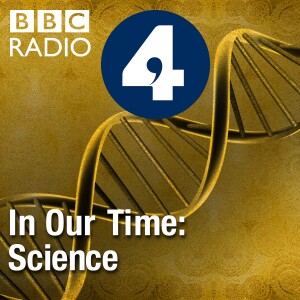
Melvyn Bragg and guests discuss the Permian-Triassic boundary. 250 million years ago, in the Permian period of geological time, the most ferocious predators on earth were the Gorgonopsians. Up to ten feet in length, they had dog-like heads and huge sabre-like teeth. Mammals in appearance, their eyes were set in the side of their heads like reptiles. They looked like a cross between a lion and giant monitor lizard and were so ugly that they are named after the gorgons from Greek mythology – creatures that turned everything that saw them to stone. Fortunately, you’ll never meet a gorgonopsian or any of their descendants because they went extinct at the end of the Permian period. And they weren’t alone. Up to 95% of all life died with them. It’s the greatest mass extinction the world has ever known and it marks what is called the Permian-Triassic boundary. But what caused this catastrophic juncture in life, what evidence do we have for what happened and what do events like this tell us about the pattern and process of evolution itself?With Richard Corfield, Senior Lecturer in Earth Sciences at the Open University; Mike Benton, Professor of Vertebrate Palaeontology in the Department of Earth Sciences at the University of Bristol; Jane Francis, Professor of Palaeoclimatology at the University of Leeds
view more
More Episodes
The KT Boundary
 2005-06-23
2005-06-23
 6
6
 2005-06-23
2005-06-23
 6
6
Renaissance Maths
 2005-06-02
2005-06-02
 3
3
 2005-06-02
2005-06-02
 3
3
Perception and the Senses
 2005-04-28
2005-04-28
 14
14
 2005-04-28
2005-04-28
 14
14
Dark Energy
 2005-03-17
2005-03-17
 19
19
 2005-03-17
2005-03-17
 19
19
Alchemy
 2005-02-24
2005-02-24
 8
8
 2005-02-24
2005-02-24
 8
8
The Cambrian Period
 2005-02-17
2005-02-17
 15
15
 2005-02-17
2005-02-17
 15
15
The Mind/Body Problem
 2005-01-13
2005-01-13
 3
3
 2005-01-13
2005-01-13
 3
3
The Second Law of Thermodynamics
 2004-12-16
2004-12-16
 7
7
 2004-12-16
2004-12-16
 7
7
Jung
 2004-12-02
2004-12-02
 15
15
 2004-12-02
2004-12-02
 15
15
Higgs Boson
 2004-11-18
2004-11-18
 15
15
 2004-11-18
2004-11-18
 15
15
Electrickery
 2004-11-04
2004-11-04
 12
12
 2004-11-04
2004-11-04
 12
12
The Origins of Life
 2004-09-23
2004-09-23
 13
13
 2004-09-23
2004-09-23
 13
13
Pi
 2004-09-02
2004-09-02
 10
10
 2004-09-02
2004-09-02
 10
10
Renaissance Magic
 2004-06-17
2004-06-17
 16
16
 2004-06-17
2004-06-17
 16
16
The Planets
 2004-05-27
2004-05-27
 15
15
 2004-05-27
2004-05-27
 15
15
Zero
 2004-05-13
2004-05-13
 9
9
 2004-05-13
2004-05-13
 9
9
Hysteria
 2004-04-22
2004-04-22
 9
9
 2004-04-22
2004-04-22
 9
9
Theories of Everything
 2004-03-25
2004-03-25
 9
9
 2004-03-25
2004-03-25
 9
9
Dreams
 2004-03-04
2004-03-04
 5
5
 2004-03-04
2004-03-04
 5
5
Rutherford
 2004-02-19
2004-02-19
 6
6
 2004-02-19
2004-02-19
 6
6
012345678910111213141516171819
Create your
podcast in
minutes
- Full-featured podcast site
- Unlimited storage and bandwidth
- Comprehensive podcast stats
- Distribute to Apple Podcasts, Spotify, and more
- Make money with your podcast
It is Free
- Privacy Policy
- Cookie Policy
- Terms of Use
- Consent Preferences
- Copyright © 2015-2024 Podbean.com



